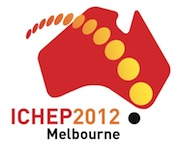Speaker
Prof.
Kaladi S. Babu
(Oklahoma State University (US))
Description
Unified theories based on SO(10) are ideal settings to address the masses and mixings of neutrinos. In minimal SO(10) models there are just two Yukawa coupling matrices, one associated with a 10 and one with a 126 of Higgs bosons (as opposed to five such matrices in the standard model). This results in a predictive framework for the neutrinos: all neutrino mixing angles and mass ratios can be computed in terms of the quark and lepton mass parameters. Even though quarks and leptons are unified, large neutrino mxing angles emerge simultaneously with small quark mixing angles. The prediction for the reactor neutrino mixing angle is \sin^2 (2\theta_{13}) = (0.08 - 0.095), which is nicely consistent with recent results from Daya Bay and RENO experiments. This talk will present the minimal model and its predictions, including the expectations for the neutrino CP violation paramter \delta. A new mechanism that connects neutrino masses with the baryon asymmetry of the universe will be presented, which relies on the B-L violating decays of GUT scale scalars.
Summary
Recent measurements of the reactor neutrino mixing angle \theta_{13} by Daya Bay and RENO experiments are nicely consistent with the prediction for this angle made some years ago based on mimimal SO(10) unified theories. The long baseline experiments will test CP violation in neutrino oscillations, for which the minimal SO(10) models make sharp predictions. The neutrino masses are directly linked to a new way of generating baryon asymmetry of the universe.
Author
Prof.
Kaladi S. Babu
(Oklahoma State University (US))
